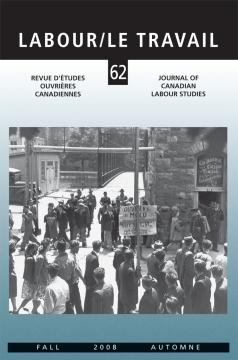Abstract
THE ONTARIO LABOUR RELATIONS ACT (OLRA) has long dictated the legal relationship between trade unions and employers in the province. Although subject to years of delay, when the provincial government introduced the olra in 1950, its official stance on labour relations was a “hands off” program that was designed to leave collective bargaining to the participants. Often defined as industrial pluralism, this new legal regime was supposed to have been crafted in the name of “fairness and balance” in which trade unions abandoned previous militancy for state-sponsored freedoms. Upon closer examination, however, the provincial government’s approach to industrial plu ralism was much less hands off than has previously been assumed. Rather, the entrenchment of collective bargaining in Ontario was closely aligned with the class interests of Ontario businesses. Through an examination of the politics surrounding olra, this article argues that Leslie Frost’s Conservative govern ment structured the Act in order to appease employer demands surrounding increased legal regulation of collective bargaining and union organizing, which limited the extension of unionization throughout the province. In making this observation, the article maintains that the Conservative regime of industrial pluralism was both the by-product and the purveyor of ongoing class antago nism throughout the 1950s.
